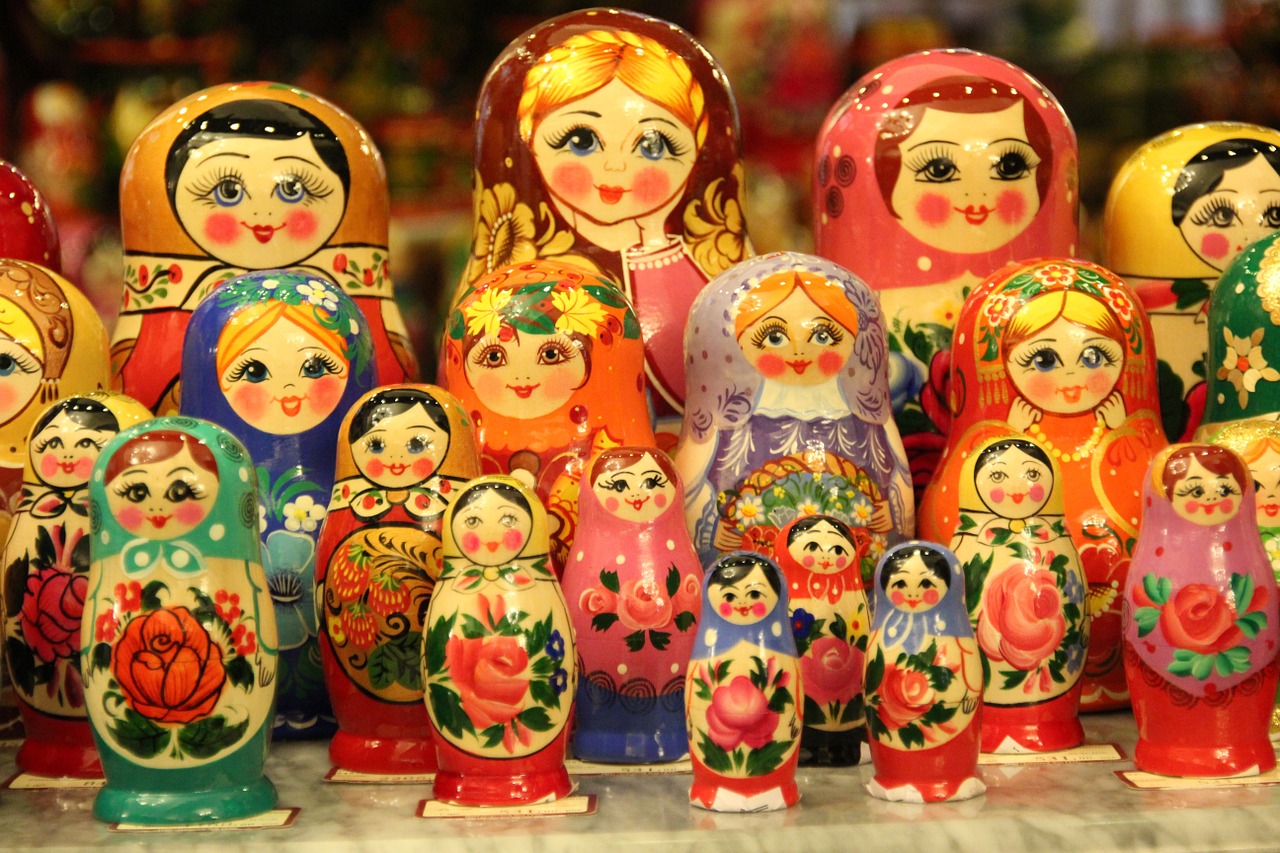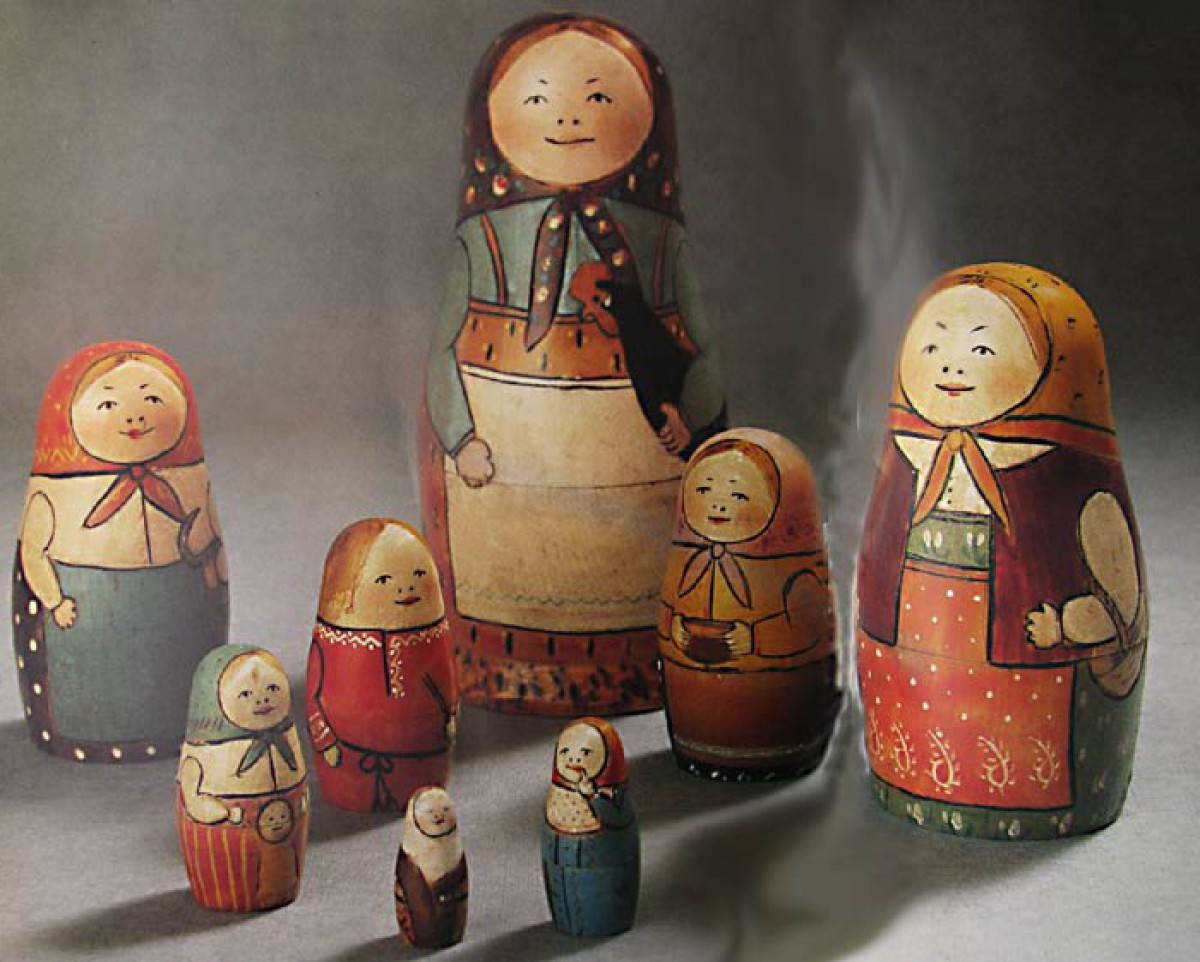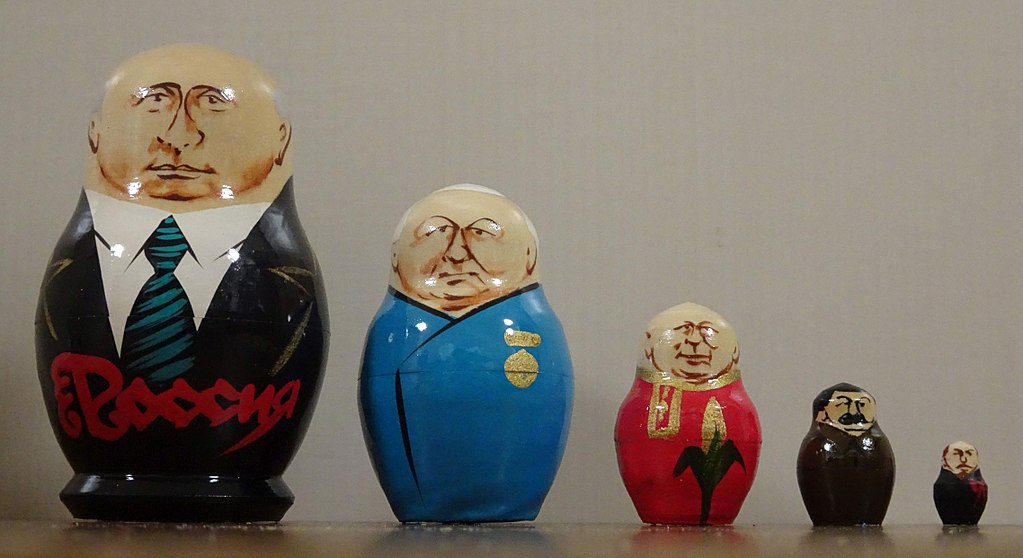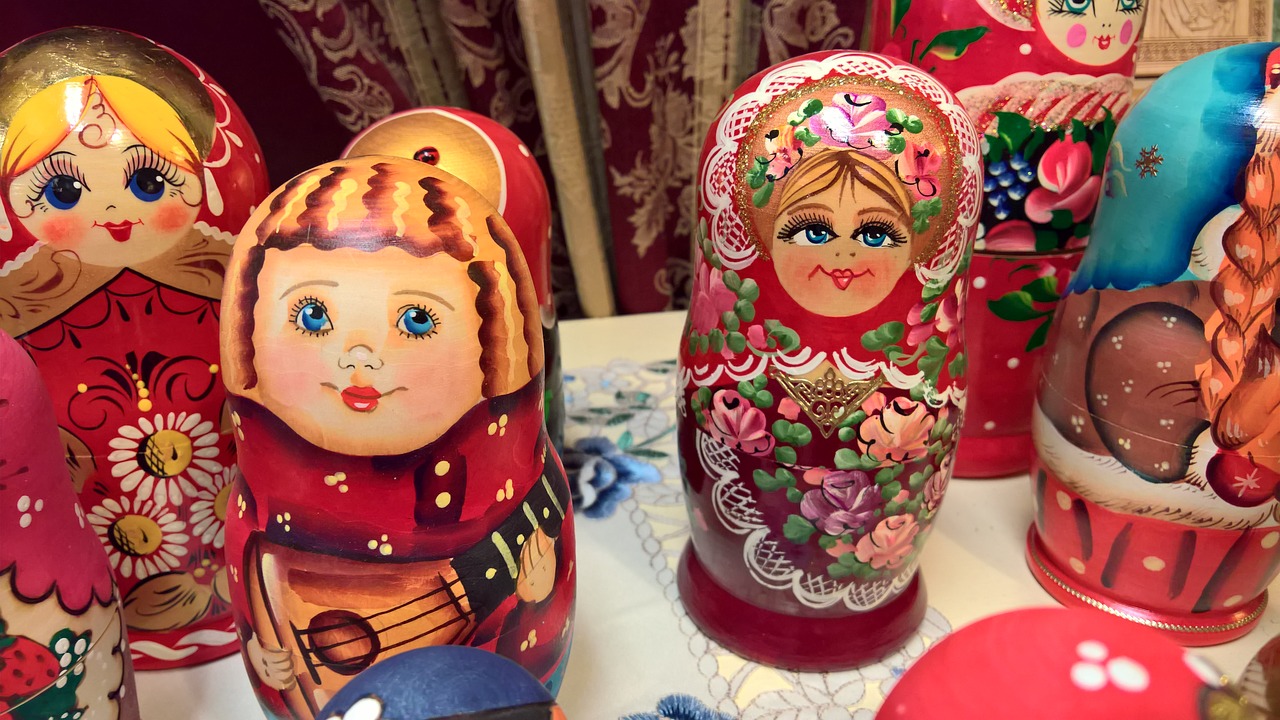Matryoshka – History of the Russian nesting doll
Russian nesting doll (Matryoshka), a well recognizable symbol of Russia and a traditional Russian souvenir, in fact is a relatively new phenomenon. Today we’ll tell you when and how this toy was born, and how it’s usually made.

History of Matryoshka
Matryoshka appeared only about 130 years ago (in 1890s), when a spouse of Savva Mamontov, the owner of a toy workshop, brought a figure of the sage Fukurum from Japan. The figure consisted of two halves and contained a smaller figure inside, which also consisted of two halves. In total, four figures depicting famous sage disciples were hiding inside the sage.
Turner Vasily Zvezdochkin, who worked in the workshop of Mamontov, carved his own figures based on the model of the Japanese toy, and artist Sergey Malyutin painted them. On the largest figure he depicted a girl in a sundress and a scarf with a black rooster in her hands. 7 more figures were hiding inside her — a boy inside a girl, and a girl inside a boy, each of them was different from others. The last figure was a baby in diapers. It is said that the name of the new toy was chosen from the most popular name at that time – Матрёна (Matryona). In addition, the basis of the name Матрёна is “матерь”, “мать” (mother). This name was associated with a mother of a large family.

At that time, Russia was at the stage of rapid economic and cultural development. Among the Russian intelligentsia there was a great interest in the works of folk art and attempts to comprehend the rich experience of artistic traditions. In addition, at the beginning of the 20th century, fashion for everything Russian flourished around the world, mostly thanks to the “Russian Seasons” (tour performances of Russian ballet and opera artists, 1908-1929) organized by a famous cultural figure and entrepreneur Sergei Pavlovich Dyagilev in Paris.
In the 1900s, the Mamontov workshop closed, but the production of matryoshka continued in a workshop in Sergiev Posad, which is located 70 kilometers north of Moscow. Since the ancient times Sergiev Posad specialized in the production of wooden toys. Often in Russia it is called the “toy capital”. Monks in special workshops were engaged in wood carving there as early as XV century. The mass production of matryoshka in Sergiev Posad began after its successful debut in Europe at the 1900 world exhibition in Paris.
The annual fair in Leipzig also contributed to the popularity of the Russian dolls. Soon matryoshka began to be constantly exhibited at the Berlin exhibition and the annual handicraft market in London. The Russian Society of Shipping and Trade created a traveling exhibition and introduced Greece, Turkey and the Middle East to the Russian nesting dolls.
In 1904, the workshop of Sergiev Posad received from Paris an official order for the manufacture of a large batch of matryoshkas. The demand for nesting dolls increased every year.
The painting of Russian dolls was becoming more colorful and diverse. They depicted girls in different clothes and with different items. There were also matryoshkas depicting a wide range of different characters: shepherdess with a pipe, bearded old men with a big stick, a groom with a bride. Artists were not limited in their fantasies. The main idea of the doll was to give a surprise. So, inside the matryoshka “Bride and Groom” one could find the relatives.
Soon, matryoshkas depicting ancient Russian knights and boyars, Kutuzov and Napoleon with their headquarters, and the heroes of fairy tales of Russian classics appeared. Often ethnographic images were created, reflecting the characteristics and details of traditional clothing from the Baltic states, the Far North and other regions.
These days, Russian dolls are made in various regions of Russia. They differ in proportions, shape, painting and details of costumes. The basis is often taken from the style characteristic of the matryoshka of Sergiev Posad.
Today, there are many types of different matryoshkas – Semenovskaya, Merinovskaya, Polkhovskaya, Vyatskaya. The most popular ones are the Maydanovskaya (from Polkhov Maidan) and Semenovskaya. In addition to traditional dolls, you can also find the authors’ works on the shelves. The price of such toys depends on the fame of the author, and the quality of work.

Production technology of matryoshka
As a rule, such tree species as linden, birch, aspen and larch are used as raw materials for making matryoshka. The tree is cut down in early spring or winter so that there is little juice in it. Also, it should not include any knots. The tree trunk is treated and put to dry up for 2-3 years. Masters say that the tree should “ring”.
First the smallest matryoshka is made, then the lower part of the next matryoshka. When the upper part of the second matryoshka is done, it’s put on the its bottom with the smaller doll inside of it and let to dry in place. This way, the dolls fit tightly together and hold well. The process is repeated for each subsequent doll. When all the dolls’ bodies are ready, they are sanded and covered with the paint base. And then begins the individual painting of each of the dolls. Watercolor, gouache and tempera are used for painting, less often oil paints.

The quality of Matryoshka is determined by how well all the figures fit into each other: they must fit tightly and not dangle inside. The first nesting dolls included from 6 to 8 dolls, but in recent years, matryoshkas that include 35 and even 70 dolls were made.
Russian nesting doll was and remains the creation of human hands. This amazing toy has overcome huge distances and became popular not only in Russia, but also abroad, recognizing no distances, boundaries or political regimes.






